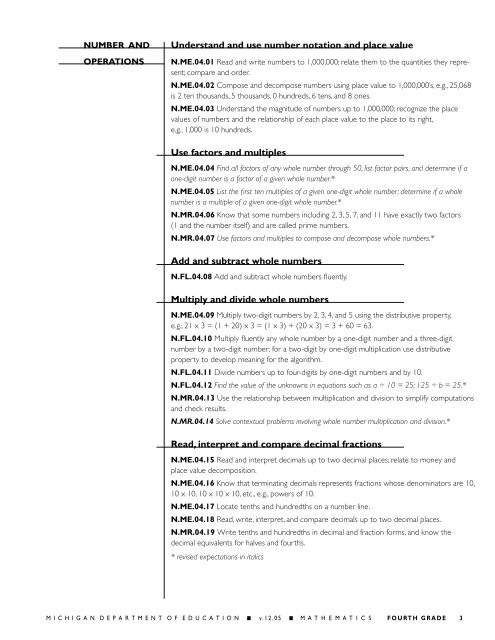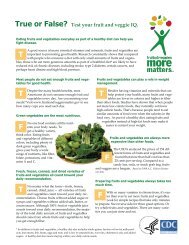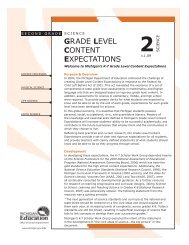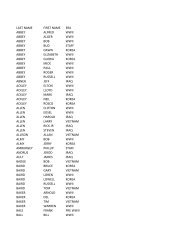Grade Level Content Expectations - State of Michigan
Grade Level Content Expectations - State of Michigan
Grade Level Content Expectations - State of Michigan
Create successful ePaper yourself
Turn your PDF publications into a flip-book with our unique Google optimized e-Paper software.
NUMBER AND<br />
OPERATIONS<br />
Understand and use number notation and place value<br />
N.ME.04.01 Read and write numbers to 1,000,000; relate them to the quantities they represent;<br />
compare and order.<br />
N.ME.04.02 Compose and decompose numbers using place value to 1,000,000’s, e.g., 25,068<br />
is 2 ten thousands, 5 thousands, 0 hundreds, 6 tens, and 8 ones.<br />
N.ME.04.03 Understand the magnitude <strong>of</strong> numbers up to 1,000,000; recognize the place<br />
values <strong>of</strong> numbers and the relationship <strong>of</strong> each place value to the place to its right,<br />
e.g., 1,000 is 10 hundreds.<br />
Use factors and multiples<br />
N.ME.04.04 Find all factors <strong>of</strong> any whole number through 50, list factor pairs, and determine if a<br />
one-digit number is a factor <strong>of</strong> a given whole number.*<br />
N.ME.04.05 List the first ten multiples <strong>of</strong> a given one-digit whole number; determine if a whole<br />
number is a multiple <strong>of</strong> a given one-digit whole number.*<br />
N.MR.04.06 Know that some numbers including 2, 3, 5, 7, and 11 have exactly two factors<br />
(1 and the number itself) and are called prime numbers.<br />
N.MR.04.07 Use factors and multiples to compose and decompose whole numbers.*<br />
Add and subtract whole numbers<br />
N.FL.04.08 Add and subtract whole numbers fluently.<br />
Multiply and divide whole numbers<br />
N.ME.04.09 Multiply two-digit numbers by 2, 3, 4, and 5 using the distributive property,<br />
e.g., 21 x 3 = (1 + 20) x 3 = (1 x 3) + (20 x 3) = 3 + 60 = 63.<br />
N.FL.04.10 Multiply fluently any whole number by a one-digit number and a three-digit<br />
number by a two-digit number; for a two-digit by one-digit multiplication use distributive<br />
property to develop meaning for the algorithm.<br />
N.FL.04.11 Divide numbers up to four-digits by one-digit numbers and by 10.<br />
N.FL.04.12 Find the value <strong>of</strong> the unknowns in equations such as a ÷ 10 = 25; 125 ÷ b = 25.*<br />
N.MR.04.13 Use the relationship between multiplication and division to simplify computations<br />
and check results.<br />
N.MR.04.14 Solve contextual problems involving whole number multiplication and division.*<br />
Read, interpret and compare decimal fractions<br />
N.ME.04.15 Read and interpret decimals up to two decimal places; relate to money and<br />
place value decomposition.<br />
N.ME.04.16 Know that terminating decimals represents fractions whose denominators are 10,<br />
10 x 10, 10 x 10 x 10, etc., e.g., powers <strong>of</strong> 10.<br />
N.ME.04.17 Locate tenths and hundredths on a number line.<br />
N.ME.04.18 Read, write, interpret, and compare decimals up to two decimal places.<br />
N.MR.04.19 Write tenths and hundredths in decimal and fraction forms, and know the<br />
decimal equivalents for halves and fourths.<br />
* revised expectations in italics<br />
M I C H I G A N D E P A R T M E N T O F E D U C A T I O N ■ v. 1 2 . 0 5 ■ M A T H E M A T I C S F O U RT H G R A D E 3






